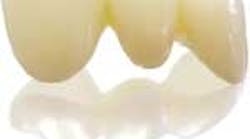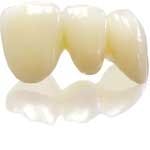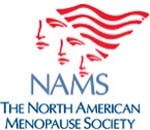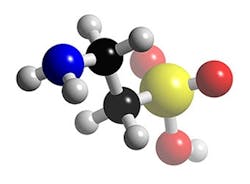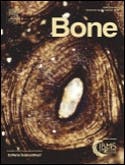By Maria Perno Goldie, RDH, MS
Periodontitis is an inflammatory disease that results from the multifaceted interaction between bacteria found in the microbial biofilm and factors initiated by the host response. The pathogenic bacteria colonize on the tooth surface and in the gingival sulcus. A variety of systemic and local antibiotics and antimicrobial products are used to control the bacterial aspect of the disease; however, the host response is thought to be the most important activity in the breakdown of connective tissue and bone, which are key features of the disease process.(1) The inflammatory process in its acute phase is a positive event; however, as inflammation becomes chronic, the very process that is meant to protect our bodies actually destroys it. Information from animals and human trials show that pharmacologic agents that alter destructive host responses may be efficacious in slowing the progression of disease. Proresolving lipid mediators, the role of proteins as biomarkers, and other agents are being researched as a way of interfering or reversing the inflammatory process in periodontal diseases.(2) Alendronate is in a class of medications called bisphosphonates. It works by preventing bone breakdown and increasing bone density, or thickness. Alendronate (ALN), an aminobisphosphonate, is known to inhibit osteoclastic bone resorption and was proposed to have osteostimulative properties in vivo and in vitro as shown by an increase in matrix formation.(3) It is used to treat and prevent osteoporosis in women who have undergone menopause and to treat osteoporosis in men, and also used to treat Paget's disease of bone.(4)
Periodontitis is an inflammatory disease that results from the multifaceted interaction between bacteria found in the microbial biofilm and factors initiated by the host response. The pathogenic bacteria colonize on the tooth surface and in the gingival sulcus. A variety of systemic and local antibiotics and antimicrobial products are used to control the bacterial aspect of the disease; however, the host response is thought to be the most important activity in the breakdown of connective tissue and bone, which are key features of the disease process.(1) The inflammatory process in its acute phase is a positive event; however, as inflammation becomes chronic, the very process that is meant to protect our bodies actually destroys it. Information from animals and human trials show that pharmacologic agents that alter destructive host responses may be efficacious in slowing the progression of disease. Proresolving lipid mediators, the role of proteins as biomarkers, and other agents are being researched as a way of interfering or reversing the inflammatory process in periodontal diseases.(2) Alendronate is in a class of medications called bisphosphonates. It works by preventing bone breakdown and increasing bone density, or thickness. Alendronate (ALN), an aminobisphosphonate, is known to inhibit osteoclastic bone resorption and was proposed to have osteostimulative properties in vivo and in vitro as shown by an increase in matrix formation.(3) It is used to treat and prevent osteoporosis in women who have undergone menopause and to treat osteoporosis in men, and also used to treat Paget's disease of bone.(4)
Bisphosphonates represent a class of pharmacologic agents that may also have a potentially important role in the treatment of periodontitis and alveolar bone disorders. A recent study investigated the efficacy of a 1% ALN gel compared to a placebo gel as a local drug delivery system as an adjunct to scaling and root planing (SRP) for the treatment of intrabony defects in patients with chronic periodontitis.(5) A total of 66 intrabony defects were treated with a 1%ALN or placebo gel. Clinical parameters (modified sulcus bleeding index, plaque index, probing depth [PD], and clinical attachment level [CAL]) were recorded at baseline and 2 and 6 months, and radiographic parameters at baseline and 6 months. The defect fill at baseline and 6 months was calculated on standardized radiographs by using image-analysis software. Results of the present study shows that the local delivery of 1% ALN into the periodontal pocket stimulated a significant increase in PD reduction, CAL gain, and improved bone fill compared to a placebo gel as an adjunct to SRP. According to the authors, these results can pave the way for new options in periodontal healing.(5)Another new study explored the clinical efficacy of 1% alendronate (ALN) gel as a local drug delivery system in adjunct to scaling and root planing for the treatment of patients with aggressive periodontitis (AgP) compared to placebo gel.(6) Fifty-two intrabony defects from 17 patients with (aggressive periodontitis) AgP were treated either with 1% ALN gel or placebo gel. ALN gel was prepared by adding ALN to a polyacrylic acid–distilled water mixture. Clinical parameters (modified sulcus bleeding index, plaque index, probing depth [PD], and clinical attachment level [CAL]) were recorded at baseline, 2 months, and 6 months, and radiographic parameters were recorded at baseline and 6 months. Defect fill at baseline and at 6 months was calculated on standardized radiographs by using image analysis software. The results of the study demonstrated local delivery of 1% ALN stimulates a noteworthy increase in PD reduction, CAL gain, and improved bone fill compared to placebo gel as an adjunct to scaling and root planing in patients with AgP. The authors caution, however, that long-term, multicentered, randomized, controlled clinical trials are required to know the clinical, histologic, and radiographic effect on bone regeneration in patients with AgP.(6)
Regarding osteoporosis and its treatment, clinicians don't always follow established guidelines.(7) As the number of menopausal women continues to rise, osteoporosis screening and treatment take on a greater importance. U.S. investigators conducted a study in women who had undergone dual X-ray absorptiometry from 2007 to 2009 to determine whether they met criteria for bone-mineral density (BMD) testing and subsequent treatment in accord with the 2006 North American Menopause Society (NAMS) guidelines.(8) These guidelines specify that screening should not be initiated until age 65 unless certain risk factors are present, and that treatment should be initiated only in osteoporotic women (or selected high-risk women with T scores between –2.5 and –2.0).(9) Among the 615 women eligible to be evaluated(mean age, 62; 95% non-Latina white), 41% did not meet criteria for BMD assessment. In all, 22% of participants were using bisphosphonates, 11% were using hormone therapy, 3% were using raloxifene, and 1% were using calcitonin. Among 102 women with any indication for treatment, 35% were not using any of these pharmacologic therapies. Among 467 women who had no indications for treatment, 18% were receiving therapy with bisphosphonates, raloxifene, or calcitonin.These findings suggest that U.S. clinicians are inappropriately screening many women and are often failing to intervene appropriately when indications for treatment are present.(7) The NAMS guidelines were updated in 2010, and some clinicians might follow other guidelines; however, all current recommendations are similar. Educating patients about reasons that screening tests are not indicated can be challenging and time-consuming. Nonetheless, the heightened awareness of risks associated with long-term bisphosphonate use, such as osteonecrosis of the jaw, can facilitate conversations about why women at low risk generally do not need treatment.
Investigations to explore the relationship of gingivitis and other periodontal diseases with salivary biomarkers, periodontal pathogens, and interleukin (IL)-1 polymorphism after a transient inflammatory burden continue to be conducted.(10) Essential amino acids, like taurine, are being studied for their osmoregulatory, antioxidative, antiapoptotic, anti-inflammatory, antilipid, and wound healing activities.(11) A correlation between diabetes mellitus, periodontal disease and salivary tryptophan (an amino acid) metabolite levels could be related to the impaired kynurenine pathway metabolism of tryptophan.(12) The role of metabolites of tryptophan via kynurenine pathway has been speculated in type 2 diabetes due to its anti-insulin action. The salivary levels of tryptophan and its metabolites may have some bearing in the progress of periodontal disease in diabetic individuals.
We should keep in mind that routine dental radiographs could provide an inexpensive way to provide wide screening of older adults for osteoporosis. Those with signs of bone thinning in the jaw could be referred for more expensive osteoporosis testing.(13,14,15) Education is key, whether we are discussing oral or systemic diseases, or the interaction between the two. References
1. Graves D. Cytokines that promote periodontal tissue destruction. J Periodontol 2008; 79(Suppl. 8):1585-1591. 2. Van Dyke TE. Proresolving lipid mediators: potential for prevention and treatment of periodontitis. J Clin Periodontol 2011; 38 (Suppl. 11): 119–125.3. U.S. National Library of Medicine. PubMed Health. www.ncbi.nlm.nih.gov/pubmedhealth/PMH0000018. 4. Meunier PJ, Delmas PD, Eastell R, McClung MR, Papapoulos S, Rizzoli R, et al. Diagnosis and management of osteoporosis in postmenopausal women: clinical guidelines. International Committee for Osteoporosis Clinical Guidelines. Clin Ther 1999; 21: 1025–44.5. Sharma A and Pradeep AR. Clinical Efficacy of 1% Alendronate Gel as a Local Drug Delivery System in the Treatment of Chronic Periodontitis: A Randomized, Controlled Clinical Trial. Periodontol 2012; 83:11-18.6. Sharma A and Pradeep AR. Clinical Efficacy of 1% Alendronate Gel in Adjunct to Mechanotherapy in the Treatment of Aggressive Periodontitis: A Randomized Controlled Clinical Trial. J Periodontol 2012; 83:19-26.7. Schnatz PF et al. Osteoporosis screening and treatment guidelines: Are they being followed? Menopause 2011 Oct; 18:1072. 8. Ettinger B, Harris ST, Kendler DL, Kessel B, and McClung MR. Position Statement: Management of osteoporosis in postmenopausal women: 2006 position statement of the North American Menopause Society. Menopause Feb 2006, Vol 13, No 3,pp 340-367. 9. Bonnick SL, Harris ST, Kendler DL, McClung MR, and Silverman SL. Position statement: Management of osteoporosis in postmenopausal women: 2010 position statement of The North American Menopause Society. Menopause 2010 Jan/Feb; 17:1, pp 1-34. 10. Lee A, Ghaname CB, Braun TM, Sugai JV, Teles RP, Loesche WJ, Kornman KS, Giannobile WV, and Kinney JS. Bacterial and Salivary Biomarkers Predict the Gingival Inflammatory Profile. Journal of Periodontology, Vol. 83, No. 1, 2012: 79-89.11. Gültekin SE, Sengüven B, Sofuoğlu A, Taner L, and Koch M. Effect of the Topical Use of the Antioxidant Taurine on the Two Basement Membrane Proteins of Regenerating Oral Gingival Epithelium. Journal of Periodontology, Vol. 83, No. 1, 2012: 127-134.12. Kapila R, Nagesh KS , Iyengar AR, Subash BV, Adiga SBV. The kynurenine pathway: a proposed mechanism linking diabetes and periodontal disease in diabetic patients. Dent Hypotheses 2011; 2: 135-139.13. Devlin H, Allen PD, Graham J, Jacobs R, Karayianni K, Lindh C, van der Stelt PF, Harrison E, Adams JE, Pavitt S, and Horner K. Automated osteoporosis risk assessment by dentists: A new pathway to diagnosis. Bone, Volume 40, Issue 4, April 2007, Pages 835-842.14. Karayianni K, Horner K, Mitsea A, Berkas L, Mastoris M, Jacobs R, Lindh C, van der Stelt PF, Harrison E, Adams JE, Pavitt S, and Devlin H. Accuracy in osteoporosis diagnosis of a combination of mandibular cortical width measurement on dental panoramic radiographs and a clinical risk index (OSIRIS): The OSTEODENT project. Bone, Volume 40, Issue 1, January 2007, Pages 223-229.15. Geraets WGM, Verheij JGC, van der Stelt PF, Horner K, Lindh C, Nicopoulou-Karayianni K, Jacobs R, Harrison EJ, Adams JE and Devlin H. Prediction of bone mineral density with dental radiographs Original Research Article. Bone, Volume 40, Issue 5, May 2007, Pages 1217-1221.
1. Graves D. Cytokines that promote periodontal tissue destruction. J Periodontol 2008; 79(Suppl. 8):1585-1591. 2. Van Dyke TE. Proresolving lipid mediators: potential for prevention and treatment of periodontitis. J Clin Periodontol 2011; 38 (Suppl. 11): 119–125.3. U.S. National Library of Medicine. PubMed Health. www.ncbi.nlm.nih.gov/pubmedhealth/PMH0000018. 4. Meunier PJ, Delmas PD, Eastell R, McClung MR, Papapoulos S, Rizzoli R, et al. Diagnosis and management of osteoporosis in postmenopausal women: clinical guidelines. International Committee for Osteoporosis Clinical Guidelines. Clin Ther 1999; 21: 1025–44.5. Sharma A and Pradeep AR. Clinical Efficacy of 1% Alendronate Gel as a Local Drug Delivery System in the Treatment of Chronic Periodontitis: A Randomized, Controlled Clinical Trial. Periodontol 2012; 83:11-18.6. Sharma A and Pradeep AR. Clinical Efficacy of 1% Alendronate Gel in Adjunct to Mechanotherapy in the Treatment of Aggressive Periodontitis: A Randomized Controlled Clinical Trial. J Periodontol 2012; 83:19-26.7. Schnatz PF et al. Osteoporosis screening and treatment guidelines: Are they being followed? Menopause 2011 Oct; 18:1072. 8. Ettinger B, Harris ST, Kendler DL, Kessel B, and McClung MR. Position Statement: Management of osteoporosis in postmenopausal women: 2006 position statement of the North American Menopause Society. Menopause Feb 2006, Vol 13, No 3,pp 340-367. 9. Bonnick SL, Harris ST, Kendler DL, McClung MR, and Silverman SL. Position statement: Management of osteoporosis in postmenopausal women: 2010 position statement of The North American Menopause Society. Menopause 2010 Jan/Feb; 17:1, pp 1-34. 10. Lee A, Ghaname CB, Braun TM, Sugai JV, Teles RP, Loesche WJ, Kornman KS, Giannobile WV, and Kinney JS. Bacterial and Salivary Biomarkers Predict the Gingival Inflammatory Profile. Journal of Periodontology, Vol. 83, No. 1, 2012: 79-89.11. Gültekin SE, Sengüven B, Sofuoğlu A, Taner L, and Koch M. Effect of the Topical Use of the Antioxidant Taurine on the Two Basement Membrane Proteins of Regenerating Oral Gingival Epithelium. Journal of Periodontology, Vol. 83, No. 1, 2012: 127-134.12. Kapila R, Nagesh KS , Iyengar AR, Subash BV, Adiga SBV. The kynurenine pathway: a proposed mechanism linking diabetes and periodontal disease in diabetic patients. Dent Hypotheses 2011; 2: 135-139.13. Devlin H, Allen PD, Graham J, Jacobs R, Karayianni K, Lindh C, van der Stelt PF, Harrison E, Adams JE, Pavitt S, and Horner K. Automated osteoporosis risk assessment by dentists: A new pathway to diagnosis. Bone, Volume 40, Issue 4, April 2007, Pages 835-842.14. Karayianni K, Horner K, Mitsea A, Berkas L, Mastoris M, Jacobs R, Lindh C, van der Stelt PF, Harrison E, Adams JE, Pavitt S, and Devlin H. Accuracy in osteoporosis diagnosis of a combination of mandibular cortical width measurement on dental panoramic radiographs and a clinical risk index (OSIRIS): The OSTEODENT project. Bone, Volume 40, Issue 1, January 2007, Pages 223-229.15. Geraets WGM, Verheij JGC, van der Stelt PF, Horner K, Lindh C, Nicopoulou-Karayianni K, Jacobs R, Harrison EJ, Adams JE and Devlin H. Prediction of bone mineral density with dental radiographs Original Research Article. Bone, Volume 40, Issue 5, May 2007, Pages 1217-1221.
Maria Perno Goldie, RDH, MS
To read previous articles in RDH eVillage FOCUS written by Maria Perno Goldie, go to articles.
